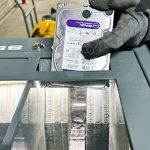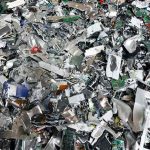The phrase “Today’s waste, tomorrow’s resources” defines sustainability. At Modern Waste, sustainability is at the core of our processes. When we talk about sustainability, we are focusing on two main things:
- Minimizing impact to the environment
- Maximizing value gleaned from materials.
Ideally, all “waste” materials have little to no impact on the environment while still benefiting society, and they generate enough revenue to pay for their handling even considering the broader waste stream.
There are levels to sustainability. Reuse is #1 since reuse of equipment and devices, as they were manufactured has no negative environmental impact and can add back to the bottom line. 2nd is partial reuse, or reuse of components from devices, which minimizes environmental impact but does not eliminate it. Recycling is the lowest level of sustainability because it requires energy, which uses resources and produces waste gases to separate and refine the raw materials for reuse in manufacturing.
Real examples of sustainable processes:
Computers- All computers have a useful lifespan. Much of that is determined by the software it uses. If a computer is operating with current software, it will be tested, data sanitized and returned to the market for reuse. If a computer can’t run the latest software, it can still provide components for other devices, lessening the environmental impact of manufacturing new components.
Alkaline Batteries- Alkaline batteries, like most battery types, are shredded and separated into components using heat or chemical separation. Those components include zinc and manganese concentrate, steel, paper, and plastic. These materials are then used as additives in manufacturing and agriculture.


